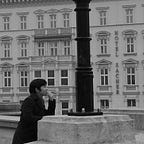El Samurái Mexicano
The Japanese Immigrant Who Fought in Pancho Villa’s Revolution
Kingo Nonaka was born in 1889 in the southern Japanese region of Fukuoka. Facing the rich seas of the Tsushima Strait, Nonaka’s family made their living by diving for pearls — an occupation with two thousand years of history in the archipelago. Due to the social and political upheavals occurring in Japan in the later 19th century, many like Nonaka considered casting their lot in the New World.
The majority emigrated to the United States, and more notably, Brazil, but between the years of 1904 and 1907, hundreds of Japanese emigrated to Mexico, where skilled labor in the construction, mining, and sugar industries was much in need. Much like her northern neighbor, Mexico reacted negatively to the new Asian immigration and enacted exclusionary legislation against Japanese and other Asian immigrants. By 1908, Mexico sealed its borders to Japan.
No matter, for the 17 year old Kingo Nonaka was somewhere in Oaxaca by then, with his brother and uncle. Getting quickly tired of the inhuman conditions of coffee farm where he found employment (“although the Japanese workers had contracts that set their working hours and wages, their bosses continuously violated those agreements”) and following the death of his uncle from malaria, Nonaka had an adventurous youth, traveling to the United States and returning to Mexico where he settled in Chihuahua, being adopted and baptized by a local family. It was here that he learned nursing from working at the local infirmary.
While visiting a friend in nearby Casas Grandes in the spring of 1911, Kingo Nonaka would find his calling and cement his place in Mexican history. The Mexican revolution had begun, and the rebel army led by General Francisco Madero had attacked a government garrison at Casas Grandes. By sheer chance, Madero, wounded from the battle, would receive treatment from Nonaka, who was recognized for his talents and promptly recruited into the rebel army. Later that year, Madero would win a brief victory and take the Mexican presidency. Nonaka was appointed as head nurse of a hospital in Ciudad Juarez responsible for treating wounded soldiers.
The Mexican Revolution continued for the rest of the decade, and Nonaka would not remain stationary. He participated in more than a dozen operations, most of them with the legendary General Francisco ‘Pancho’ Villa, being promoted to Captain in the Northern Division (he was likely the first Asian-Mexican to attain this rank). Nonaka was far from the only Japanese who had distinguished himself in both sides of the Mexican Revolution: other illustrious figures include Tsuruo Nishino, personal cook of Pancho Villa; Shinzo Harada, a judo master who taught martial arts to soldiers; Zenzo Tanaka, who escaped from a coffee plantation and became a cavalry lieutenant; Emilio Nakahara, who became a second sergeant, and Antonio Yamane, who attained the rank of first captain in the Constitutionalist army.
When the revolution ended in 1920, Nonaka left the army. The search for a quiet life took him to Baja California, a beautiful peninsula washed by the crashing Pacific waves on one side and the calm California Gulf on the other. He settled in the growing town of Tijuana, where he opened a small photography studio. In the ensuing years, photographs taken by Nonaka would provide valuable scenes recording the rise and development of Tijuana, today one of Mexico’s major cities.
Nonaka had been a naturalized citizen for nearly two decades when the Second World War caused Mexico to break diplomatic relations with Japan. Like their counterparts in United States and Canada, citizens of Japanese descent were relocated to internment camps on suspicion of spying for the enemy (a claim with no solid basis; no evidence of espionage by Japanese immigrants was found in any of the three countries). Around 3,500 Japanese-Mexicans were forced to move away from the coastal areas and relocated to the harsh desert of central Mexico. Simply by sharing a face with the enemy, Nonaka, a veteran of the Revolution who had served alongside some of Mexico’s most illustrious heroes, was forcibly uprooted from his Tijuana home and relocated to Mexico City.
When the war ended, most Japanese-Mexicans never saw the homes and businesses they held before the relocation, many settling where they had been incarcerated during the war years. Nonaka would remain in Mexico City until his death in 1977, quietly practicing medicine. Even here he left his mark, becoming a founding member of Mexico’s National Institute of Cardiology.
As far as the study of immigrant groups in the New World goes, material on Japanese diaspora remain scarce. As far as the study of Japanese immigrants to Latin America, the focus has been on Japanese-Brazilians (who number 1.5 million today) or Japanese-Peruvians; very little literature exists on Japanese-Mexicans. Perhaps because of their low numbers in comparison to Chinese, Italians, and other groups, or perhaps because Japan itself became one of the world powers after the late 19th century, the nikkei population’s stories are relatively obscure beyond “internment camps”. This article is just one tiny thread in the tapestry of privations and endeavors of Japanese who for various reasons left their ancient homeland and made their mark on a young and rapidly growing continent.
